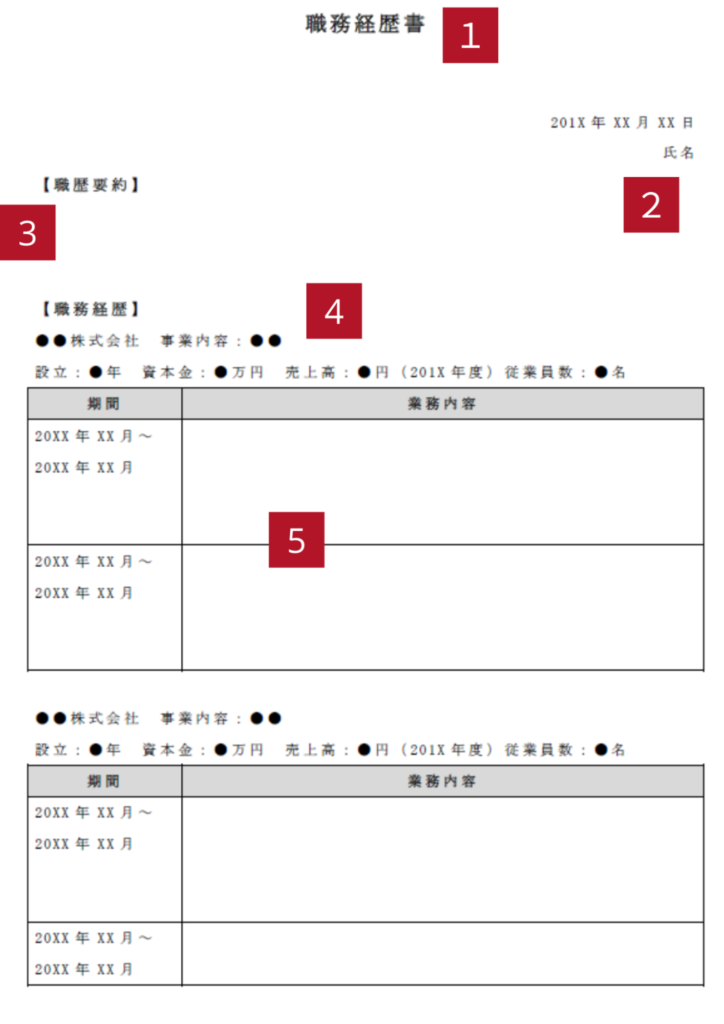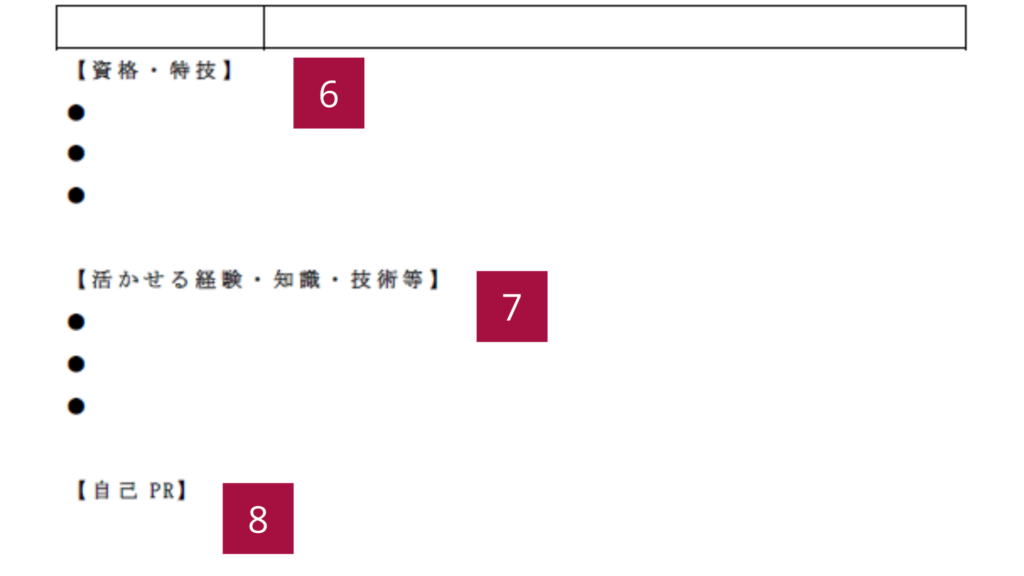Japanese culture is very different from Western culture, and job hunting is no exception. When applying for work in Japan, you need to know how to write two different resumes – firstly the rirekisho (履歴書) and then the shokumukeirekisho (職務経歴書). Both follow stringent guidelines, especially at more traditional companies. Here’s what to know before writing you Shokumukeirekisho.
Rirekisho – The First Step
When you apply to a Japanese company, you will start by sending an initial resume known as a rirekisho. This is a two-page document that includes your basic information, a photo, your work experience, qualifications, and a bit of self-promotion. It is mostly bullet point-style, short and succinct. Our article on the rirekisho is a great resource to help you avoid common mistakes.
What Is a Shokumukeirekisho?
The “second resume” shokumukeirekisho (職務経歴書) is more like a western-style resume. Its purpose is to expand upon details not included in the rirekisho. It allows you to sell yourself more – essentially a combination of footnotes and a cover letter. The format is also more flexible than the rirekisho.
We help freelancers
With World in Freelance, you can find:
- Fully remote options – Work anywhere you want.
- Passion projects – Spend time on what inspires and excites you.
- Japanese language upkeep – Team up with top Japanese tech companies.
Writing your Shokumukeirekisho
Even though it is not as stringent as the rirekisho (履歴書), there is still a recommended format for writing your shokumukeirekisho (職務経歴書). You want to ensure it stands out to employers, while still highlighting your unique skills. Let’s look at how to write:
- The title
- Your name and the date of submission
- Career summary (shokureki yoyaku 職歴要約)
- Employment history (shokumu keireki 職務経歴) #1
- Employment history (shokumu keireki 職務経歴) #2
- Qualifications (shikaku 資格) and special skills (tokugi 特技)
- Self-PR and motivation

1. The Title
For the title, you can simply put shokumukeirekisho (職務経歴書) at the top of the page.
2. Your Name And The Date Of Submission
Write the date of submission in the upper right corner of the page. Just like the Rirekisho, be careful to update the date before sending your resume. The day you submit the document should be included. Write your name in katakana below the date, and don’t forget that in Japan, the family name comes first.
3. Career Summary Shokureki Yoyaku ( 職歴要約)
Use this field to give a brief description of you and your previous experience. Be sure to keep it short – it shouldn’t go over 250 characters. For example:
I have about 5 years of experience as a sales clerk and executive secretary in the sales department of an Internet advertising agency. In addition, as a team leader, I trained mid-career employees (about 10 people a year) and participated in regular meetings with sales managers as an administrative representative.
4. Employment History Shokumu Keireki (職務経歴) #1
This is the main part of the Shokumukeirekisho. You have to create a subsection for each company you have worked for. First, start with the following information:
- Company name: Write the official name of the company in the following format: 株式会社○○
- Employment period: If you are still working for the company, write “20XX年X月X日~現在 (XX/XX/20XX-present)
- Contract Type:正社員(Permanent employee)、契約社員(Contract employee)、派遣社員(Dispatch employee) etc.
- Industry
- The date on which the company was established
- Capital stock
- Annual profit
- Number of employees
You can find all this information on the company’s corporate website. (if you are not sure about some information, you may omit it)
5. Employment History Shokumu Keireki (職務経歴) #2
Do you remember listing all the companies you have worked for on your Rirekisho? Well, it’s time to give more details about your duties, your responsibilities, and your achievements.
This section is probably one of the most important of the Shokumukeirekisho. You have to give details about your duties and responsibilities and how they are linked to the job description, so try to emphasize the skills the company seems to be looking for. Besides your tasks, it would be good to add some information about your achievements (sales performance, promotion, etc). It is better to keep this field concrete and concise, and not give information irrelevant to the job you’re applying for.

6. Qualifications (Shikaku 資格) and Special Skills (Tokugi 特技)
If you have any qualifications or special skills, you can include them in this section. As in the Rirekisho, note the official name and the date of completion. For example, don’t write “JLPT 1級”, but “日本語能力試験 1級” and add ○○○○年取得 (passed on 20XX).
You can also add your driver’s license, and certificates such as Microsoft Office Specialist Excel, and so on. Some people also write their visa type and expiration date in this section.
7. Other Skills
In this field you can write your language proficiency levels, your PC skills, and all qualifications that might be relevant to the position that you are applying for, for example:
・English: Native level
・Japanese: Fluent (JLPT N1)
・Spanish: Business level
・MS Office: Excellent
・Photoshop: Intermediate
9. Self-PR And Motivation
Last but not least, in this field you can explain why you applied to the job, why you think you could be a good fit, and show how motivated you are. You can talk about your previous experiences and how you think you can use them by linking them with the job description. Again, even if this section is extremely important, you have to be concise and do not write over 250 characters.
Be careful not to write the same thing you wrote on your Rirekisho. It’s your chance to add more details and be even more convincing.
Some Final Tips For Writing A Shokumukeirekisho
Usually, both Rirekisho and Shokumukeirekisho are required to apply for any given position. Although resumes are increasingly submitted in a digital format, many conservative companies may still prefer the traditional handwritten version. The fonts usually used to write a Japanese resume are Gothic and Mincho. Keep the font types and sizes consistent on both your resumes. Your Shokumukeirekisho shouldn’t be too long either: under 2 pages is recommended.
Make sure you know about the culture of the company you are applying to. Think about who is going to read your resume and what kind of information they are expecting. Make it easy to read and scan through. Organize your career history in chronological order. Focus on experiences, skills, and strengths related to the job description.
Remember the end goal is to land an interview. In an interview, the questions will be based on what you wrote on your resume, so be honest about your skills and your experience and be ready to talk about it in detail. If you don’t feel confident about your language usage, you can ask a Japanese friend or a recruiting agent to check your Japanese.

After the Shokumukeirekisho
Now that you have all the information you need to compile a Shokumukeirekisho, take some time to craft a well-written one, and don’t hesitate to ask for help if you need to. Inbound Technology‘s knowledgeable career advisors can be reached here. You can also follow us on LinkedIn!
